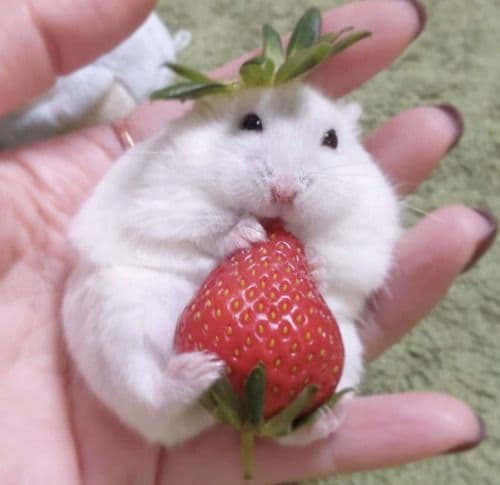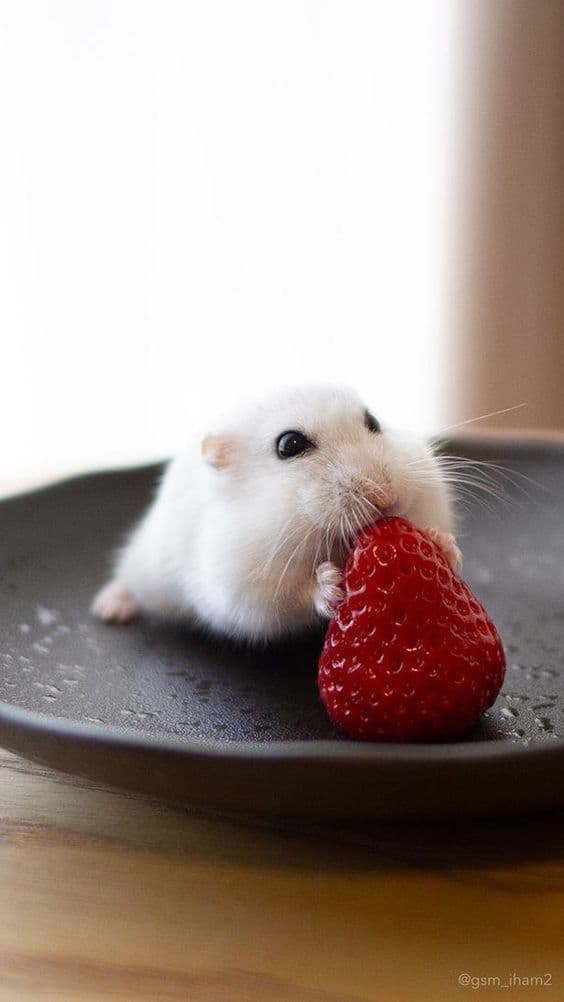Characteristics, Housing, Diet, and Other Information
Dwarf Winter White Russian hamsters are small, cuddly, and can make great pets, especially for teens and adults. If this is your first time caring for a hamster, start with a solitary hamster. While they are similar to the larger Syrian hamsters and Campbell’s dwarf Russian hamsters, they’re more docile. Selective breeding techniques have produced a few different coat colors and patterns.
Species Overview
- COMMON NAME: Dwarf Winter White Russian hamster, Siberian hamster
- SCIENTIFIC NAME: Phodopus sungorus
- ADULT SIZE: 3.5 to 4 inches
- LIFE EXPECTANCY: 1 to 3 years
Dwarf Winter White Hamster Behavior and Temperament
Dwarf winter white Russian hamsters are nocturnal but may be active for short times during the day too. They are more tolerant of handling than other types of hamsters and are less likely to bite or nip; They make excellent pets and are generally quite good-natured. however, this breed can be squirrelly and sometimes may become too quick and challenging to handle for younger children.
Unlike Syrian hamsters, dwarf winter white Russian hamsters are social with their species and may be kept in same-sex pairs or groupings, but usually only if introduced at a young age. Do not add adults or new hamsters to a group. Even some hamsters that were raised together may get territorial and need to be separated as they get older. Beware of mixed-sex pairs or groups; they will turn your habitat into a breeding tank, which can produce a litter every three weeks.
Do not expose hamsters to other pets; it can stress them out. Cats may view them as prey animals.
Housing the Dwarf Winter White Hamster
These mini hamsters are little enough that they can squeeze between the bars of many hamster cages. Your best option is an aquarium-type tank for housing. While a minimum size can be 24 inches long and 12 inches wide (about the size of a 20-gallon aquarium), a bigger tank is preferable. Be sure that the top allows for ventilation, and make sure it is secure. If your hamster appears to be sick or injured, you can keep it calm by keeping it warm, and then, contact your veterinarian.
Your new pet may enjoy burrowing into the bedding to stay warm, especially during the winter. The substrate can include woods shavings, shredded paper, or a commercial brand of bedding. Avoid cedar or pine wood shavings, since they release volatile compounds which may harm your dogs.
Hamsters need activity and exercise wheels are a great way to keep your pet fit and happy. You may also provide climbing structures and tubes, but do not create a structure from which your hamster can take a significant fall. Tubes, while fun, can be tricky to clean. Also, make sure you choose a type that offers ventilation. Offer a little house or nesting box inside the cage for your pet to cover or sleep.
RELATED: 2 Common Types of Wood Shavings That May Not Be Safe for Your Pet
Food and Water
Hamsters can get complete nutrition with pelleted food available at pet stores, so long as it contains 15 to 20 percent protein. Select a type intended for hamsters as opposed to mice or rats. Offer about 1 to 2 tablespoons every day in a small ceramic bowl.
You can also feed your pet a wide range of fresh foods and treats, including many fruits, vegetables, whole-grain cereal, and pasta. However, some foods could be toxic or hazardous, including raw beans, raw potatoes, almonds, citrus fruit, garlic, and onions.
Provide your hamster with a supply of fresh, clean water. You can keep a ceramic dish of water in the cage or hang a bottle from the side of the cage. Regularly check that the water nozzle is functioning and change the water daily.
Common Health Problems
Hamsters are usually reasonably hardy pets, but be sure you have a vet in the event of an emergency. Some common health problems in hamsters can include:
- - Injuries from falling, fights with cage-mates, or run-ins with sharp objects
- - Respiratory infections
- - Wet tail (diarrhea), treatable with antibiotics
- - Abscesses
- - Skin issues (mites)
You will know if your pet is uncomfortable when you see one or more of these signs of injury or illness: loss of appetite, loss of energy, unwillingness to socialize (hiding), excessive scratching or hair loss, sneezing, wheezing, or discharge from the nose or eyes, and diarrhea or wetness around the tail.
Cover the bottom of the tank with 2 to 3 inches of soft bedding.
Purchasing Your Dwarf Winter White Hamster
You can find dwarf winter white Russian hamsters in pet stores, but since they are very similar to Campbell’s Russian hamsters (more commonly found), pet stores commonly misidentify them. They usually sell from $15 to $25.
These little hamsters are usually a dark gray color on their backs with a black dorsal stripe along the center of the back. The fur on the belly is white. However, in the winter, the back fur can turn white to varying degrees (a change triggered by changes in day length). These hamsters also have furred feet. You can tell you have a winter season white hamster if it has a more compact, rounded body with a shorter face. The Campbell’s variety includes a more lean, sleek body and mouse-like face with larger ears.
To be sure that you are buying a dwarf winter white Russian, get your hamster through a reputable breeder. Many reputable breeders belong to local or regional clubs (or to less formal groups) with members that breed and show hamsters in a particular geographic area. You can often meet breeders and buy hamsters at the exhibitor tables of hamster shows or pet expos.
If you are buying hamsters in person, be sure that the pet you purchase seems healthy, alert, and energetic. It should have bright eyes, a shiny coat, dry tail, and no nasal or eye discharge. Check the quality of the bedding to be sure it’s clean, and be sure that your potential pet’s cage-mates are in good health.
Similar Pet Hamsters to the Dwarf White Russian
If you are interested in dwarf hamsters, check out:
- - Campbell’s Dwarf Russian Hamster Species Profile
- - Roborovski Dwarf Hamster Species Profile
- - Chinese Hamster Species Profile
Campbell and Winter White hamsters are frequently mistaken for Siberian hamsters, which are also involved in the Djungarian breed. The Chinese and Roborovski are thought to be two distinct breeds, as is the Siberian. The precise classification of breeds varies between professionals and breeders and quite often is interchangeable.
After reading through our article, can you recognize a winter white dwarf hamster? Now let’s check out other types of hamsters that can be your new pet.





